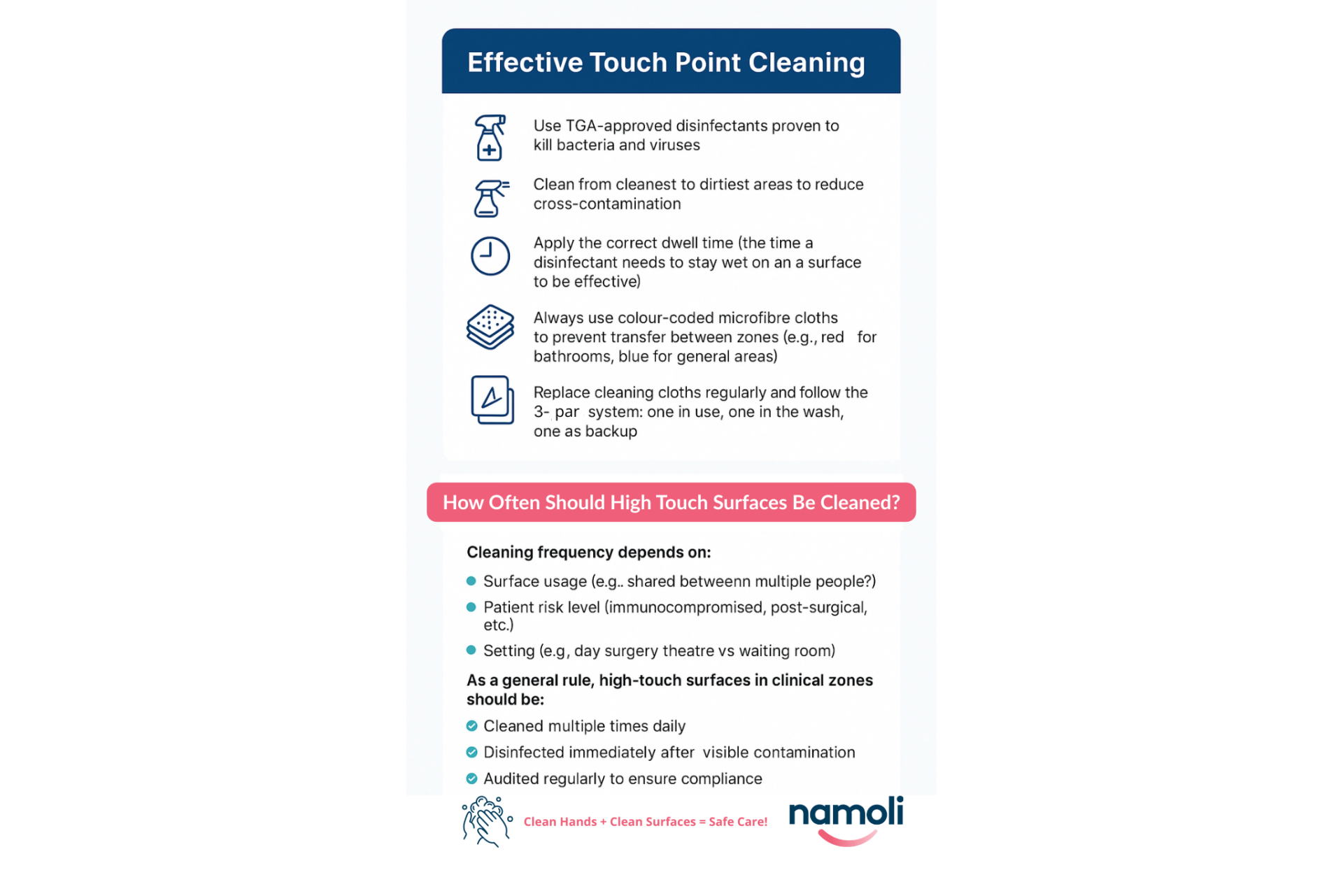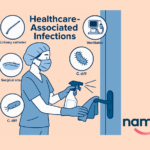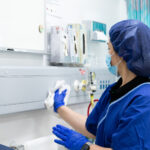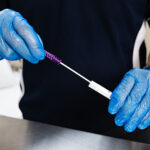Published for World Hand Hygiene Day – 5th May
High‑touch surfaces—door handles, bed rails, switches—harbour pathogens that can cause infections. Effective cleaning practices for these surfaces are essential in healthcare settings. This guide explains which surfaces are most at risk, how to clean them properly, and how often to do it.
Key Takeaways
- Identify and prioritise high‑touch points (handles, rails, call bells, IV pumps) and clean them multiple times a day.
- Use hospital‑grade disinfectants, microfibre or disposable cloths, and follow correct dwell times to kill pathogens.
- Set cleaning frequency based on surface use and patient risk profiles; perform spot cleaning for spills and audit results regularly to ensure compliance.
What Are High-Touch Surfaces?
High-touch surfaces are any areas frequently touched by hands—both by healthcare workers, patients, and visitors. These surfaces can easily become contaminated with microorganisms and serve as silent carriers of infection.
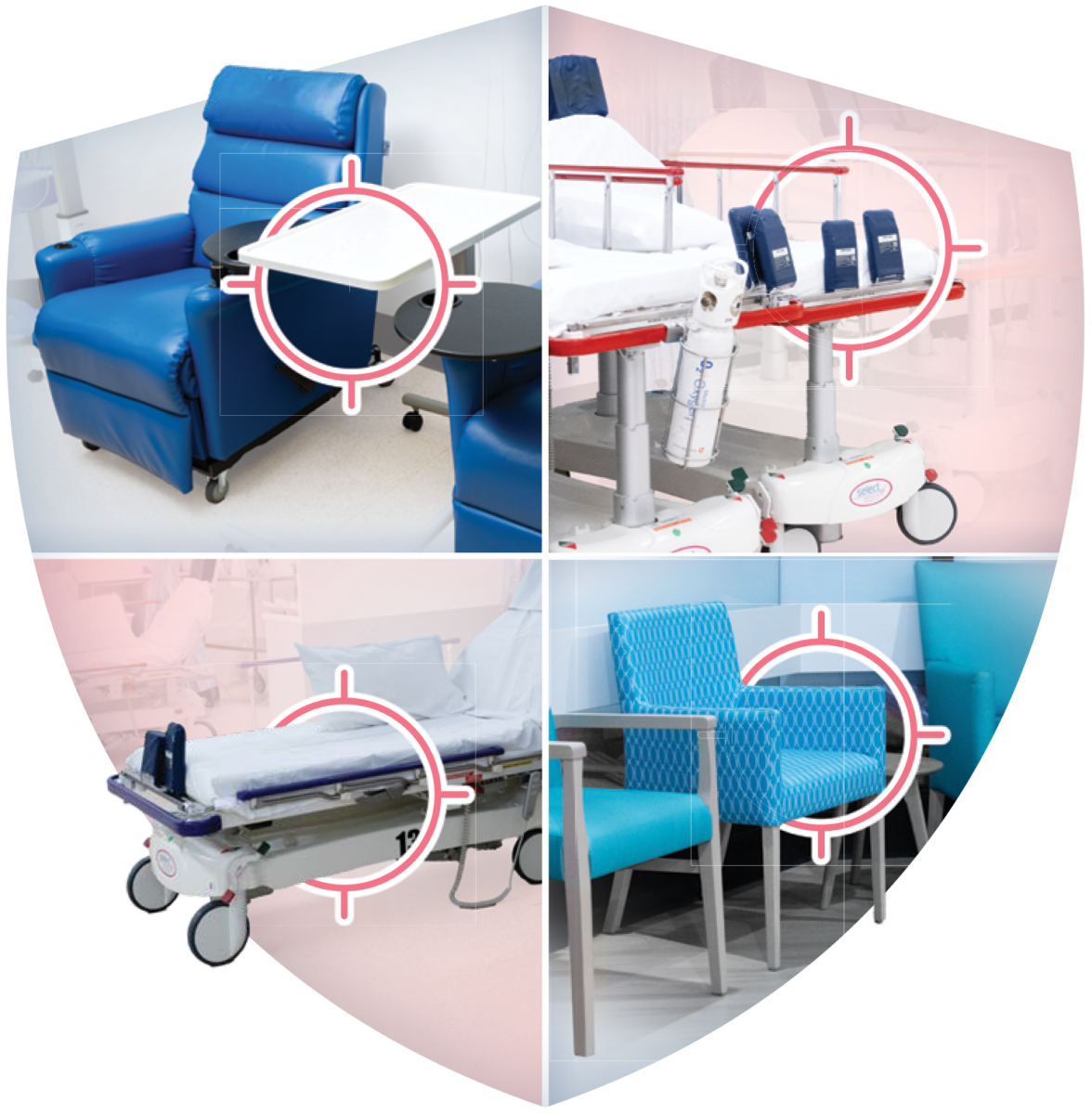
Common examples in hospital and clinic settings include:
- Door handles and push plates
- Light switches and lift buttons
- Chair arms and bedside rails
- IV pumps and blood pressure cuffs
- Bathroom fixtures (toilet flushes, sink taps)
- Shared equipment like keyboards, phones, and remote controls
- Reception desks, sign-in kiosks, and pens at check-in counters
- Handrails in waiting areas, corridors, and staircases
- Cafeteria trays and vending machine buttons
- Surfaces in visitor pick-up zones and patient bedside tables
These surfaces are touched often and frequently overlooked in daily cleaning routines if clear protocols aren’t in place.
The Link Between Hands and Surfaces
Here’s the catch: clean hands can become contaminated just by touching a dirty surface. Similarly, dirty hands can transfer pathogens onto clean surfaces. Without a combined strategy, one undermines the other.
This interplay is sometimes referred to as the “circle of transmission”—a chain of contact points that can enable the spread of infection if not disrupted. Breaking this circle requires two actions working together:
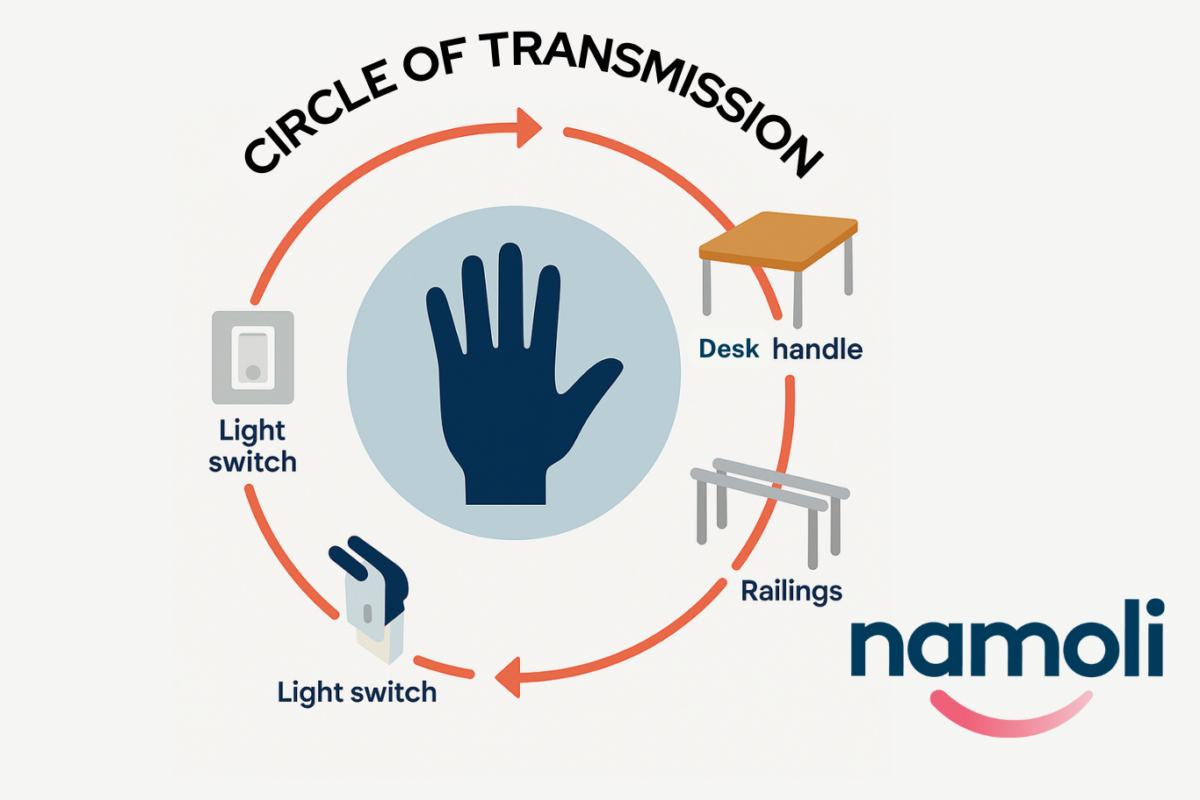
- Proper hand hygiene (e.g., washing or sanitising at the right moments)
- Consistent and effective disinfection of high-touch surfaces
At Namoli, we don’t just clean—we protect. That means implementing healthcare-grade cleaning routines tailored to your environment and aligned with national guidelines.
How to Disinfect High-Touch Surfaces Effectively
When it comes to disinfecting high-touch surfaces, the method matters just as much as the frequency. Here’s what effective cleaning looks like:
- Use TGA-approved disinfectants proven to kill bacteria and viruses
- Clean from cleanest to dirtiest areas to reduce cross-contamination
- Apply the correct dwell time (the time a disinfectant needs to stay wet on a surface to be effective)
- Always use colour-coded microfibre or disposable cloths to prevent transfer between zones (e.g., red for bathrooms, blue for general areas)
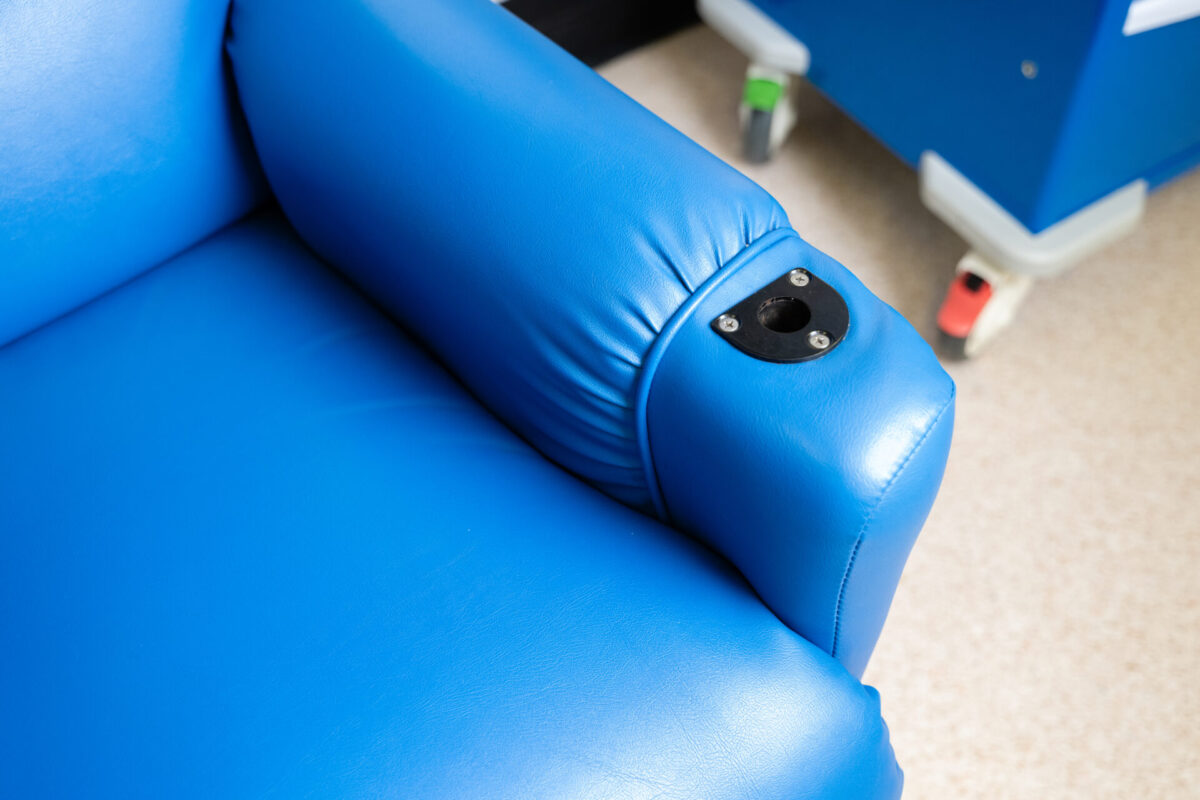
Replace cleaning cloths after each use and follow the 3 – part system: a set of cloths and mops in use, one in the wash, one as backup
How Often Should High-Touch Surfaces Be Cleaned?
Cleaning frequency depends on:
- Surface usage (e.g. shared between multiple people?)
- Patient risk level (immunocompromised, post-surgical, etc.)
- Setting (e.g. day surgery theatre vs waiting room)
As a general rule, high-touch surfaces in clinical zones should be:
- Cleaned multiple times daily
- Disinfected immediately after visible contamination
- Audited regularly to ensure compliance
At Namoli, we enhance routine cleaning with objective testing (e.g., protein surface testing and bioluminescence testing) to provide visible proof of hygiene and peace of mind to staff and patients alike.
Clean Hands + Clean Surfaces = Safe Care
In honour of World Hand Hygiene Day, we encourage every healthcare facility to re-evaluate not just handwashing practices but also their touch point cleaning protocols. Because when hands and surfaces work together, infections don’t stand a chance.
Click to download our free “best practices for disinfecting high-touch surfaces” infographic to share with your team and reinforce the message in your clinic.

Ready to elevate your hygiene standards?
Speak to the specialists at Namoli Healthcare about custom environmental cleaning solutions for your practice.
Related Posts
Healthcare cleaning isn’t the same as cleaning an office or retail store—lives are at stake. Specialist providers use advanced techniques,…
Published for World Hand Hygiene Day – 5th May Healthcare‑associated infections are preventable—but they require diligence. This article explores the…
Published for World Hand Hygiene Day – 5th May The WHO’s Five Moments for Hand Hygiene are critical in stopping…

